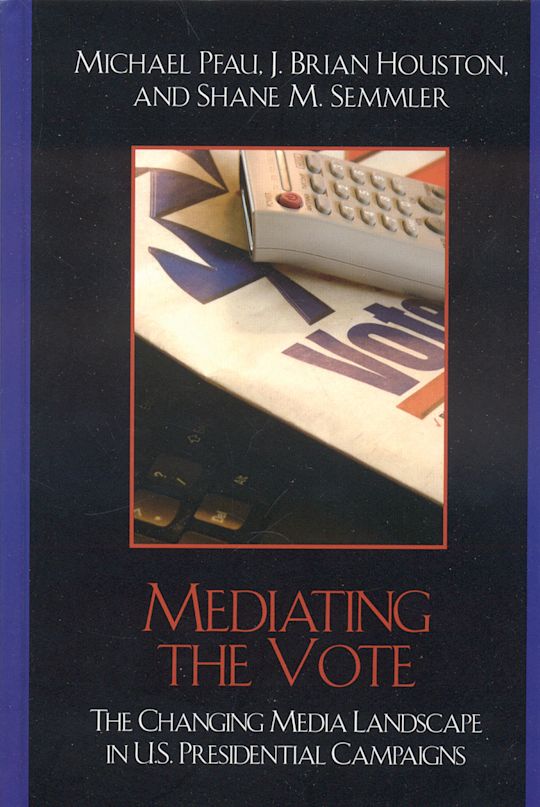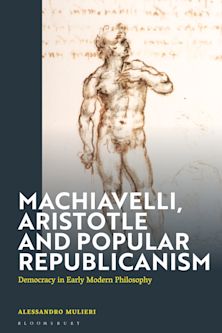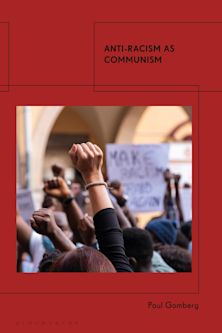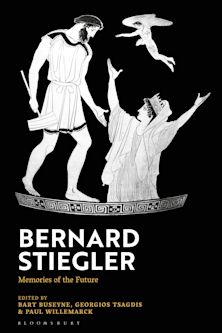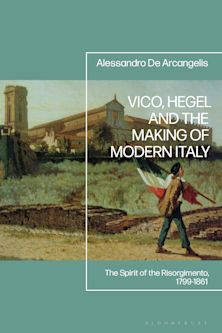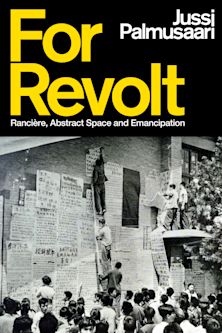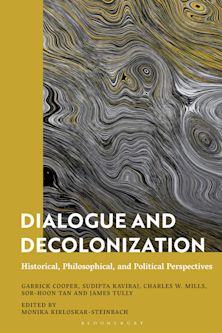- Home
- ACADEMIC
- Politics & International Relations
- Political Theory and Philosophy
- Mediating the Vote
Mediating the Vote
The Changing Media Landscape in U.S. Presidential Campaigns
Mediating the Vote
The Changing Media Landscape in U.S. Presidential Campaigns
This product is usually dispatched within 2-4 weeks
- Delivery and returns info
-
Flat rate of $10.00 for shipping anywhere in Australia
You must sign in to add this item to your wishlist. Please sign in or create an account
Description
A sea change is taking place in how people use media, and it affects not only how people perceive political candidates and where they get their information, but also_more broadly_their basic democratic values. Mediating the Vote systematically explores a number of questions about media use and its relation to democratic engagement, analyzing the effects of communication forms on the 2004 presidential elections. Are Democratic and Republican voters increasingly turning to different outlets for information about candidates and campaigns and, if so, what does this mean for political discourse? Which communication forms_newspapers, television news programs, the Internet, or films_had the greatest impact on people's perceptions of the presidential candidates during the 2004 campaigns? Do different forms of media affect people, either intellectually or emotionally, in distinct ways? And do some communication forms elevate, whereas others degrade, basic democratic values? This book probes these questions and more, and the results contribute to an important goal in political communication studies: creating a more refined, integrated, and_ultimately_precise picture of how media affects democratic engagement.
Table of Contents
Chapter 2 1 The Changing Communication Landscape
Chapter 3 2 Communicating along Party Lines
Chapter 4 3 Political Communication, Emotions, and the Intellect
Chapter 5 4 Perceiving Presidential Candidates
Chapter 6 5 The Media Landscape and Democratic Engagement
Chapter 7 References
Chapter 8 Appendix: Design of the Studies
Product details
| Published | 27 Nov 2006 |
|---|---|
| Format | Paperback |
| Edition | 1st |
| Extent | 186 |
| ISBN | 9780742541443 |
| Imprint | Rowman & Littlefield Publishers |
| Dimensions | 236 x 154 mm |
| Series | Communication, Media, and Politics |
| Publisher | Bloomsbury Publishing |
About the contributors
Reviews
-
Mediating the Vote offers a novel and necessary examination of the changing communication forms and their impact on democratic engagement. The focus on the presidency, forms of communication, and especially democratic engagement is cutting edge and makes the book a critical read for scholars of communication, media, and politics.
Shawn J. Parry-Giles, University of Maryland
-
Michael Pfau and colleagues address key questions about how today's media can enhance or undermine citizenship. Bringing together data on a vast range of media, their findings inform the efforts of campaign strategists, media practitioners, and students of political communication alike.
Patricia Moy, University of Washington
-
Recommended.
Choice Reviews
-
Mediating the Vote is a fascinating gestalt of political communication during an election year. Examining 17 different media that range from the traditional venues of newspapers, television news, and advertising to the more recent venues of talk radio, television comedy, and the Internet, this comprehensive guidebook to our expanded world of political communication investigates a variety of resulting outcomes among citizens-including the public's perceptions of the candidates, media use patterns among partisans in comparison to the marginally attentive, and attitudes toward the democratic process. Highly beneficial preparation for the coming presidential election!
Maxwell McCombs, University of Texas at Austin; author, Setting the Agenda: The Mass Media and Public Opinion









